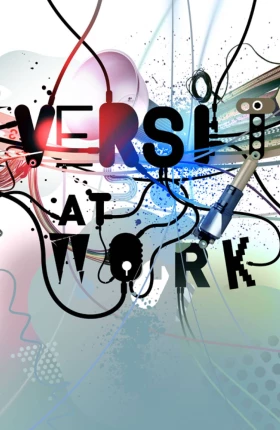Most of us, at some points in our lives, have felt excluded: at parties where we didn’t know anyone, in the school cafeteria or gym class, in some other situation where we felt like the odd person out. When we’ve been in those situations, we’ve felt palpable relief when someone we knew arrived or when someone we didn’t know made an effort to engage us. For many employees with diverse backgrounds in corporate America, that relief never comes. These employees contend with a pervasive sense of otherness that can manifest itself in a thousand small ways, including being talked over in meetings, being the unwilling audience to an off-color joke, and watching other people get credit for their work.
Women@BCG Podcast
Women@BCG Podcast
Listen as Justin Dean, managing director and partner, and Frances Brooks Taplett, partner, discuss five key success factors to creating an inclusive culture.
Listen to the podcast
Many companies are taking steps to increase the diversity of their workforces. And for good reason. Research shows that bringing diverse perspectives to the table increases companies’ resilience and agility and boosts innovation and financial performance. (See “Diversity at Work,” BCG article, July 2017, and “How Diverse Leadership Teams Boost Innovation,” BCG article, January 2018.) Yet hiring diverse employees is only the first—and, in many cases, the easiest—step. To reap the benefits, companies must include those employees in the conversation. Diverse employees must feel comfortable sharing their perspectives freely, and their views must be considered and acted upon.
At many companies, that doesn’t happen. According to a comprehensive survey BCG recently conducted, diverse employees—especially those with more than one dimension of diversity—feel far less able than employees of majority groups to share their views at work. Diverse employees who do share their views reported that often they feel that their voices are not heard. We believe that the solution lies in changing the organizational culture to ensure that all employees feel included and all voices are appreciated. This is a different approach to diversity—one that’s not easily accomplished—but diversity for its own sake is little more than a numbers game. Diversity plus inclusion is the source of real value.
Unheard and Undervalued
BCG recently conducted a proprietary survey of more than 4,000 US employees, aiming to learn how they rate their inclusion in the workplace. The survey asked respondents for their perceptions about two critical aspects of their work life:
- Whether they feel free to be their authentic selves at work
- Whether their perspectives at work matter and are listened to
Diversity plus inclusion is the source of real value.
We asked all respondents whether they were part of any underrepresented group, considering gender, race and ethnicity, LGBTQ status, disability, and—given the challenges that can arise in reintegrating with the civilian workforce—veteran status.
It is no surprise that white men reported the highest level of inclusion: of the majority group—white, heterosexual-cisgender men who are not veterans and who have no disability—78% percent said that they feel free to be their authentic selves at work, and 74% said that they feel that their perspectives matter. White men are the dominant group in business, and they typically set the organizational tone and culture. Men represent roughly half of the US population, but, according to Catalyst, a nonprofit focused on advancing women in leadership, they hold almost 75% of corporate leadership positions and are 95% of Fortune 500 CEOs. Among the 16 Fortune 500 companies that report complete diversity data (that small number is itself cause for concern), 70% of senior executives are white men.
For diverse respondents, it’s a different story. Respondents with one dimension of diversity—for example, white females, racially diverse males, or veterans—were, on average, 4 to 6 percentage points less likely to feel included. Moreover, the more dimensions of diversity respondents reported, the less included they were likely to feel. For those with two dimensions of diversity—for example, women with a disability—the number dropped by 7 percentage points. And for those with three dimensions, the drop was even greater. For example, lesbians of color are 15 percentage points less likely to feel included than white, heterosexual men. (See Exhibit 1.)
The key takeaway is that although companies are making well-intentioned efforts to recruit and hire a diverse workforce, many of those hires don’t thrive within the organization because, for the most part, they don’t feel included as valued, appreciated contributors. That kind of noninclusive culture can have cascading consequences. When employees from diverse groups have no opportunities to speak up, they fall off the track to more senior management and leadership positions. (In many cases, implicit biases in evaluation and promotion processes are factors as well.)
The result is a vicious cycle: a paucity of diverse role models in the organization and few diverse leaders with whom employees can network. And employers miss out on the benefits of diversity—an extended range of perspectives and backgrounds that lead to more effective problem solving and greater innovation.
What does an inclusive and innovative culture look like? It’s one in which all team members—regardless of tenure, title, or personal background—have the opportunity to contribute their points of view during meetings and discussions. In fact, leaders at companies with inclusive cultures expect all team members to contribute. These leaders set the conditions that encourage participation. They take the time to hear all points of view before making a decision, and they don’t tolerate retribution against people who offer dissenting opinions; instead, those opinions are explicitly valued. This combination of diversity and inclusion is what changes organizational cultures and unlocks real value. (See Exhibit 2.)
Creating an inclusive work environment is not easy. It can require a company to make a fundamental culture shift, which needs to cascade throughout the organization, affecting the day-to-day experience of every frontline employee. As such, this process needs to be treated as a transformation, not a one-and-done policy shift issued by HR.
To achieve an inclusive culture, a company must focus on five key success factors. (See Exhibit 3.)
As such, this process needs to be treated as a transformation, not a one-and-done policy shift issued by HR.
Commit at the top. As in any transformation, change must start at the top, with the senior leadership and CEO visibly and vocally highlighting diversity and inclusion as priorities of equal weight. The leaders need to set the tone and culture of the organization, modeling interactions with people, laying out the formal policies that underpin those interactions, and making decisions that incorporate feedback from all corners.
Making a clear business case for diversity and inclusion is crucial. At BCG, our leaders’ clear articulation of the ways that inclusion is related to the firm’s business priorities led to a mindset shift. A management consulting business that does not include diverse perspectives cannot deliver the best ideas to its clients—BCG’s key value proposition.
Other companies have also highlighted the business case for inclusion. For example, the insurer Nationwide started its Our Associates’ Success Drives Business Success initiative to lift all associates, applying particular emphasis to women and associates of color.
Enlist frontline leaders. Frontline leaders—the operational managers who oversee line employees—have to support the change as well. Managers at this level have the biggest impact on the daily lives of their direct reports, and their involvement can make or break transformation efforts. It is critical that these managers understand the cultural shift and buy into it.
Yet frontline leaders also have unique needs. They’re typically in their first or second management role, having made a recent shift from “doing” to “leading.” Many have had only limited training in how to manage and coach teams, even though their current positions require skills that are different from those of their previous roles as individual contributors. Many of them have their hands full simply getting their work done each day and lack additional bandwidth for setting the right tone and culture. Giving these leaders practical tools for embedding inclusion into the daily processes and routines of their departments can make the day-to-day experience far more inclusive for diverse employees. (See “Why Frontline Leaders Are Crucial.”)
WHY FRONTLINE LEADERS ARE CRUCIAL
WHY FRONTLINE LEADERS ARE CRUCIAL
When people think of company leadership, they immediately think of the C-suite. But frontline leaders—those who directly manage line employees—have a significant impact on an organization’s performance, particularly during a transformation. There are far more people at this level, and they control the day-to-day experience of most employees. (See How Frontline Leaders Can Deliver Breakout Performance, BCG Focus, November 2016.) Here are some practical tips for enhancing team inclusivity that are used by the best managers and companies we’ve worked with.
Inclusive Meetings and Discussions
- At the start of a meeting, set expectations: everyone will participate. Call on people by name if necessary.
- Amplify messages, especially the arguments or ideas expressed by diverse employees. Their contributions are sometimes not “heard” until they are repeated by a majority member. When this happens, credit should, of course, be given to the person who introduced the idea.
- Set ground rules for discussions. Make sure, for example, that only one person speaks at a time and no one interrupts or talks over another person. Studies have consistently shown that women are interrupted more often than men—even at the Supreme Court. And make it clear that there will be absolutely no retribution for disagreement.
- Rotate the responsibility for running meetings, giving responsibility to different people on the team.
- For each meeting, designate the person who is responsible for taking notes so that nobody gets pigeon-holed into a low-status position. Incidentally, the notes can—and should—include any off-topic ideas that might be distractions during the meeting.
Inclusive Personnel Decisions
- Prior to the consideration of actual candidates, establish clear criteria and qualifications for top assignments and promotions.
- Slow down and evaluate people objectively. Avoid gut-level decisions.
- To reduce inevitable bias in evaluations, mentally “flip” the person who is being considered. For example, if you, perhaps, have a specific opinion about a woman who is under consideration, ask yourselves whether you’d think the same thing about a man.
- Focus on results—business outcomes—not just where you are and how you got there.
- Give feedback that is specific and actionable, with facts rather than adjectives.
- Isolate employees’ communication styles from their competency.
- Monitor the composition of your projects and teams.
Amplify best practices. Some of the most effective training is the result of having identified the company’s own stars and capitalized on their insights. Who are the organization’s culture carriers? Whose teams are performing well and coming up with the best, most innovative ideas? And critically important, what distinguishes the successful leaders from the rest?
By observing how these leaders operate, companies can develop standardized tactics and tools—meeting guides, checklists, and tips—that the rest of the organization can apply. The star performers can be asked to help disseminate their ideas. Throughout all training, celebrate successes with real-world examples—stories that show how diverse teams came together and how someone spoke up in a way that changed the team’s point of view and ultimately improved performance.
Never tolerate bad behavior. Make an explicit determination as an organization: inclusion matters. Be clear and specific about what the company expects and hold everyone accountable. Cultures can be deep rooted, and changing a company’s culture invariably requires specifying that certain behaviors are undesirable and no longer allowed. Publicize your values, antidiscrimination and harassment policies, and codes of conduct. Take all complaints seriously, making sure that there are systems and policies for handling serious infractions. Designate specific people as being responsible for listening to employees’ concerns and problems.
Train your teams to call out bad behavior, including, for example, insensitive comments or jokes, talking over women, and actions or words that perpetuate unpleasant stereotypes. Support for the organization’s inclusive culture needs to be an important and meaningful part of managers’ evaluations, through upward feedback from the employees on their teams. Managers who don’t work to make every member of their teams feel comfortable and included should not be getting the highest bonuses, best assignments, or quickest promotions.
Measure and track. What’s measured gets changed. Add questions on inclusion to employee surveys and use employees’ responses to identify problem areas, diagnose areas that require more time and attention, and track progress. At BCG, for example, in addition to asking whether employees believe that the firm makes a good effort to be inclusive of individuals with diverse backgrounds generally, the annual people survey asks employees to rate their personal sense of inclusion by responding to such statements as My opinions seem to count at work. BCG provides an environment in which I feel like a valued member of the firm. And At work, there is a culture where it is safe to speak up and express opinions.
Continually review the composition of projects and teams to ensure that managers aren’t simply hiring and promoting people who look like themselves. Objective, data-driven results need to have consequences in the form of rewards for top performance and additional training and attention for the leaders of teams that do not meet the new standard.
Over the past few years, companies have made significant progress in diversifying their workforces, but diversity is only the beginning. Companies that fail to create the kind of culture that includes all voices and perspectives will miss out on the true benefits of diversity. Worse, there are companies that do nothing for the people they claim to want but who are allowed to suffer in a negative work environment.
Taking the steps we’ve described above will not immediately solve all the problems that can be associated with the inclusion of diverse employees. Our research highlights the additional challenges for employees with more than one dimension of diversity. Still, by taking action to cultivate a more inclusive culture—by instituting broad organization-wide policies and improving the hundreds of daily interactions that make up an employee’s work day—companies can move toward getting the best from all of their people. The stakes are too high to do otherwise.













